Black Pride beauty captured in stunning pictures
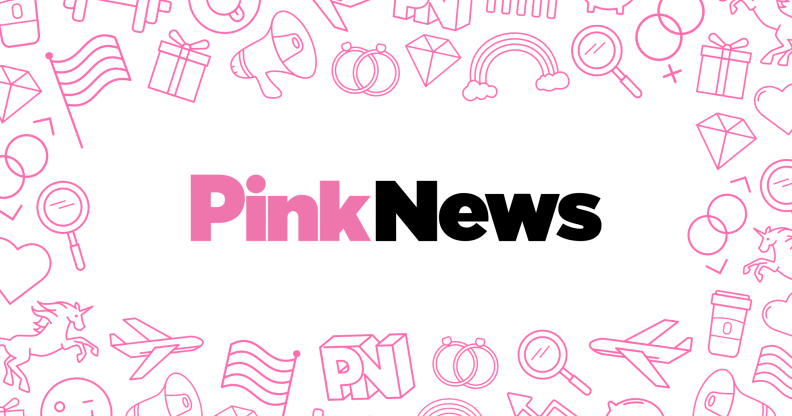
A photographer who experienced Black Pride for the first time captured some stunning images of the event’s participants.
Ayishat Akanbi is a Nigerian-British fashion stylist, writer, cultural commentator and photographer. After her pictures captured people’s attention on Twitter, Akanbi spoke to PinkNews about her portraits of Black Pride.
“I’ve been openly queer for over 10 years, but it’s only been in the last 3 years that I’ve recognised the importance of being active in queer spaces,” she said.
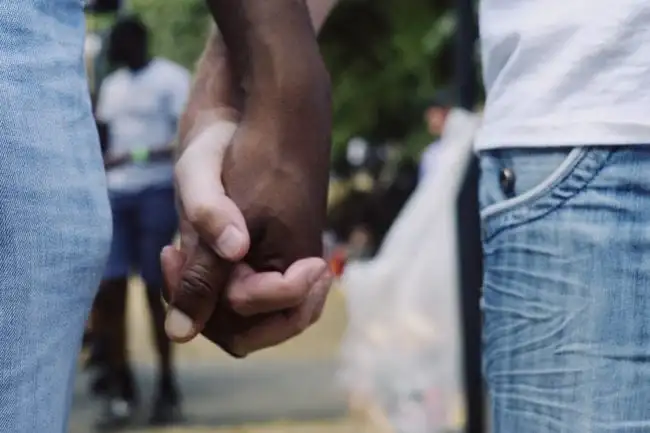
“It’s classic, light blue denim and white tshirts. It feels timeless” (Image courtesy of Ayishat Akanbi)
Black Pride has been held annually since 2006, traditionally on the day after the Pride in London march, to “foster, present and celebrate Black LGBT culture.”
This year, the event was particularly poignant in light of a recent Stonewall report that found 51 percent of Black, Asian and Minority Ethnic (BAME) LGBT+ face discrimination within the queer community.
Q. In which ways does Black Pride present a different setting compared to other shootings you’ve done?
A. Black Pride differs from other places I’ve shot because of the freedom, eccentricity, joy, liberation and the variety of ages. I spotted people aged 70 down to as young as one-year-old. There are few gatherings where you can have such diverse age gaps.
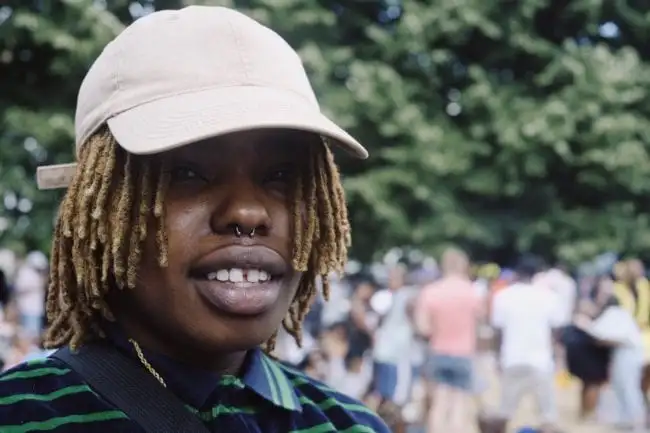
“I represent what I don’t see, that’s how you cope with frustration. You try to fill the gaps. No one can represent us like we can represent ourselves” (Image courtesy of Ayishat Akanbi)
Q. Was this your first time at Black Pride?
A. This was my first time at Black Pride, which is as embarrassing as it was thrilling. Immediately as I arrived, my initial thoughts were—”Why haven’t I done this before.”
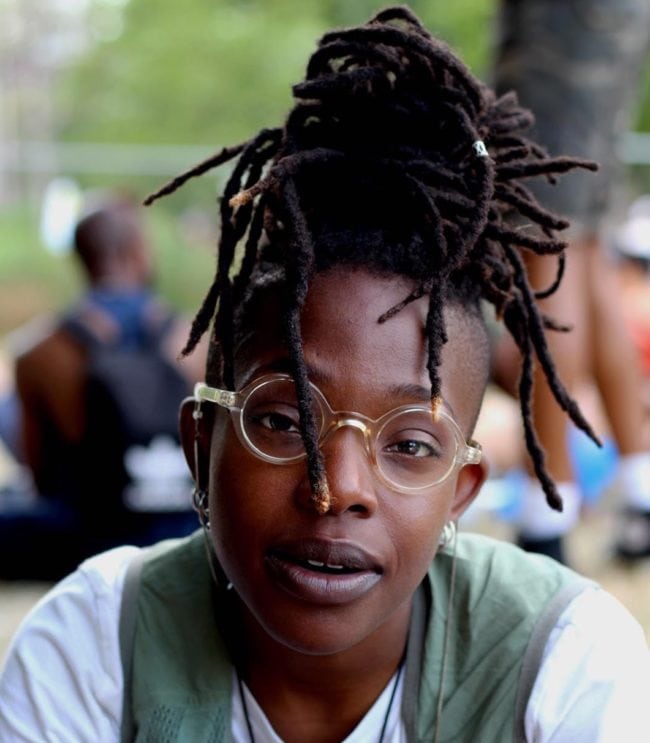
Ayishat Akanbi pictured by Chyna Jackson (Image courtesy of Ayishat Akanbi)
Q. Did you also go to Pride in London on Saturday?
A. I didn’t go to Pride in London, I have been twice before in previous years. I spent the Saturday at Queer Picnic in the Park. It’s POC-centered, widely inclusive and has a bohemian hippy vibe about it. I felt like I was at a Black Woodstock. London Pride doesn’t represent the aspects of LGBT+ culture that I relate to.
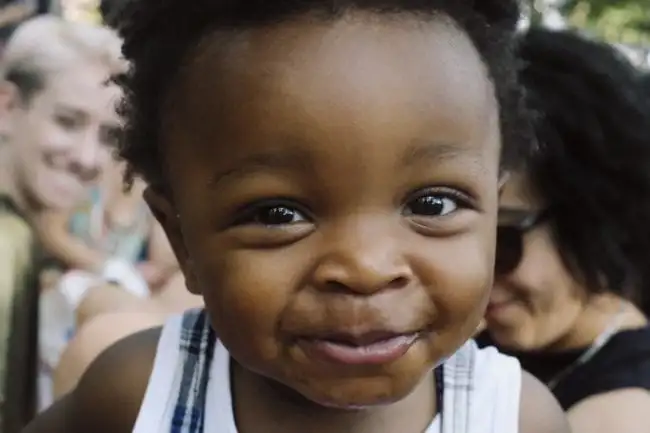
“A picture of a baby I took from the Queer Picnic, his name is CJ. He was all over me and my camera, he jumped on me and kept smiling and drippling with a happiness I could have wept over. He made me feel fufilled. There are few spaces where you can let a toddler roam freely and know whoever he runs into will show him endless love. I was blessed to witness and capture him” (Image courtesy of Ayishat Akanbi)
Q. Can you elaborate on that?
A. For me Pride in London misses out on celebrating our mental liberation and seems to focus on our sexual liberation. Whilst it’s great to feel liberated sexually, this isn’t the only reason why people want to come to Pride.
Some people want to see queer art, poetry, dances, and talks. I think Pride could be more inclusive if it was less parade-heavy and more of a festival that catered to different parts of LGBTQ+ culture with a variety of stages.
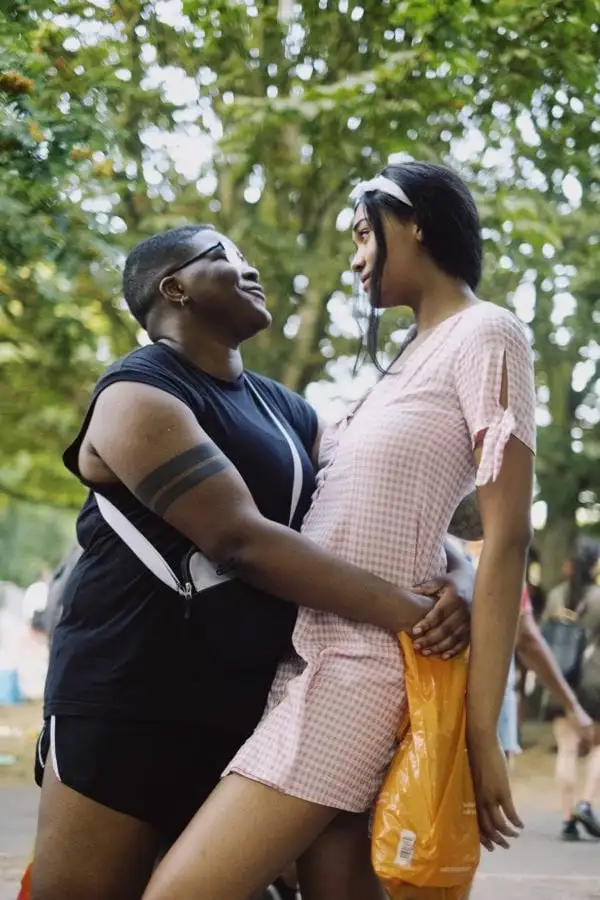
“Black Pride differs from other places I’ve shot because of the freedom, eccentricity, joy, liberation and the variety of ages.” (Image courtesy of Ayishat Akanbi)
Q. How do you approach your subjects?
A. I try to look for what’s undeniably beautiful yet underrepresented. I shoot my friends and beauty that isn’t validated by society. I think I look for elements of myself in the subjects I choose to shoot. I notice that many of my images are of androgynous black women because I don’t see enough of this in art and culture. It’s a beauty that hasn’t been validated.
Fine ass men of Black Pride 2018.
Shot by me. pic.twitter.com/gYYaeJoohp
— Ayishat A. Akanbi (@Ayishat_Akanbi) July 9, 2018
I approach whoever I am drawn to, sometimes its a spontaneous moment. But in queer spaces I ask for pictures before taking them. I’m aware that some may be at pride against their families wishes. I won’t post anyone online who doesn’t know I took a picture of them in a space like that.
Q. What is your biggest frustration with BAME representation in this country?
I don’t have many frustrations because I am active. I represent what I don’t see, that’s how you cope with frustration. You try to fill the gaps. No one can represent us like we can represent ourselves.
However, the lack of BAME representation is suggestive of a narrow view of beauty. I’m no longer angry, but I pity people who only recognise beauty and human worth to be one thing—What a limited existence!
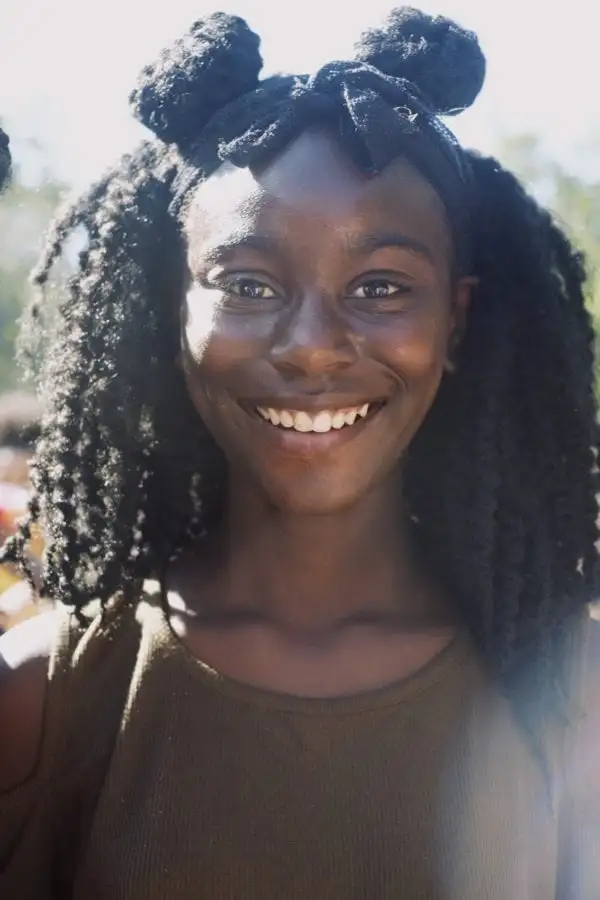
“A portrait of a young black girl who recognised me from work I do on CBBC, she was dark skinned, gorgerous and seemingly taken aback and excited to meet me. I recognised she saw in me what I didn’t know I needed to see as a child” (Image courtesy of Ayishat Akanbi)
Q. Who are your icons and role models that inspire you?
Audre Lorde, Bell Hooks, Maya Angelou, Angela Davis, Chimamanda Ngozi Adichie, Lauryn Hill… Too many radical feminists to name, but everyone who has contributed to the liberation of women’s minds. Not all of the women listed are queer but they are all fearless.”

